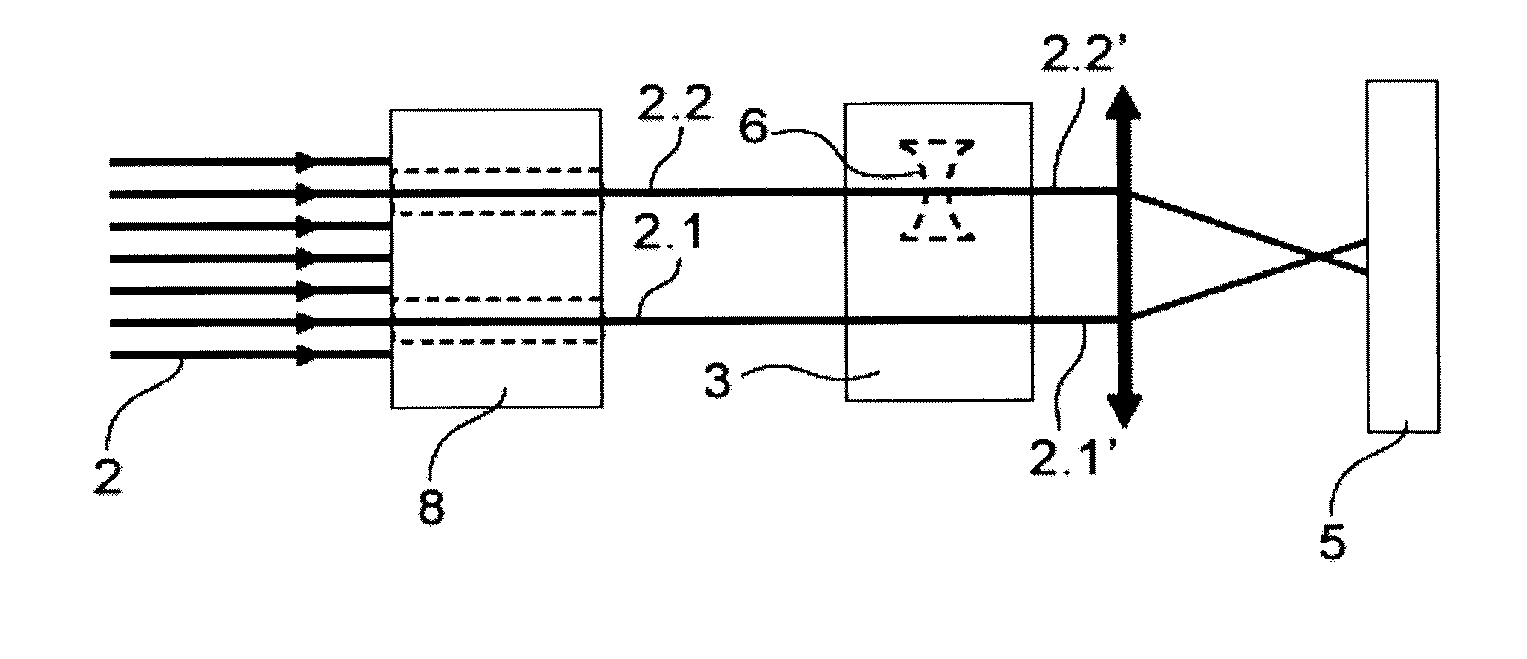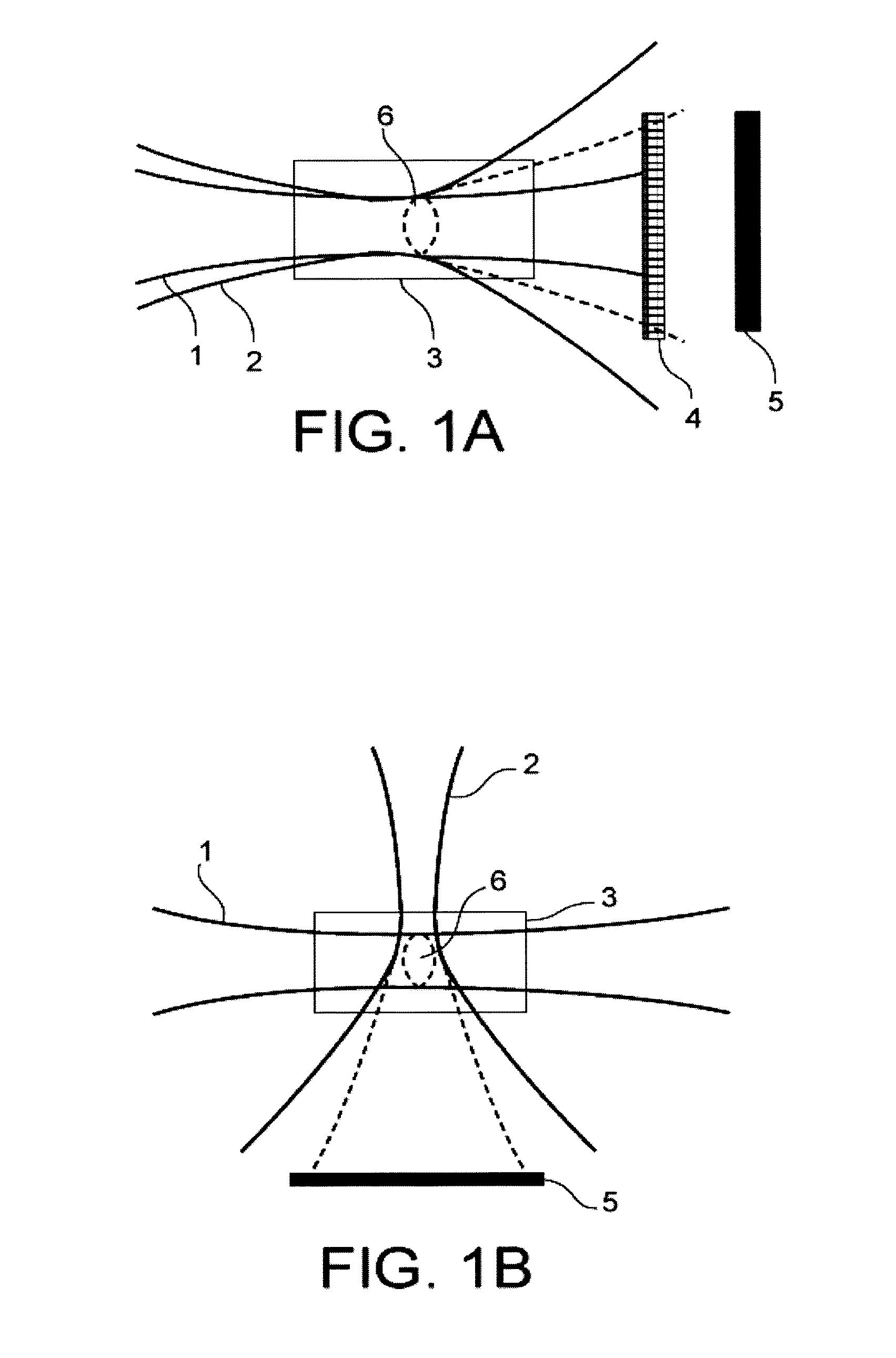Device for measuring the focal distance of a thermal lens
a thermal lens and focal distance technology, applied in measurement devices, material analysis through optical means, instruments, etc., can solve the problems of large volume, local decrease of refractive index, and difficult experimental implementation, and achieve the effect of small volum
- Summary
- Abstract
- Description
- Claims
- Application Information
AI Technical Summary
Benefits of technology
Problems solved by technology
Method used
Image
Examples
Embodiment Construction
[0043]One object of the present invention is actually to provide a method for measuring the focal distance of a thermal lens created in an analyte which does not have the above-mentioned drawbacks and in particular, which is not sensitive to energy variations of the source generating the probe optical beam.
[0044]Another object of the invention is to provide such a method which does not depend on energy variations transmitted by the source generating the probe optical beam under the influence of its absorption by the analyte.
[0045]Still another object of the invention is to provide such a method which does not depend on slight geometrical variations at the intersection between the probe optical beam and the exciting optical beam.
[0046]A method for measuring the focal distance of a thermal lens created in an analyte according to the invention includes the steps of:
[0047]providing an exciting optical beam by an exciting optical source, such exciting optical beam passing through the ana...
PUM
 Login to View More
Login to View More Abstract
Description
Claims
Application Information
 Login to View More
Login to View More - R&D
- Intellectual Property
- Life Sciences
- Materials
- Tech Scout
- Unparalleled Data Quality
- Higher Quality Content
- 60% Fewer Hallucinations
Browse by: Latest US Patents, China's latest patents, Technical Efficacy Thesaurus, Application Domain, Technology Topic, Popular Technical Reports.
© 2025 PatSnap. All rights reserved.Legal|Privacy policy|Modern Slavery Act Transparency Statement|Sitemap|About US| Contact US: help@patsnap.com



